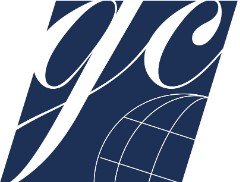President Trump’s Return: A New Challenge for Canada’s Defence Spending and NATO Commitments
With Donald Trump set to return to the U.S. presidency, critical discussions about Canada’s defence spending and commitments to NATO have taken on new urgency. Canada’s defence reputation has faced consistent criticism by the U.S., particularly for failing to meet the NATO target of 2 per cent of GDP. Trump’s re-emphasis on “America First” policies and burden-sharing within NATO would likely intensify U.S. demands, placing unprecedented pressure on Canada to bolster its military spending and capabilities.
Canada’s Defence Spending and Reputation
Despite being a founding NATO member, Canada remains one of the few allies failing to meet the 2 per cent GDP defence spending benchmark. Its current defence budget of approximately $34 billion represents 1.34 per cent of GDP, far below its NATO peers. Criticism over this shortfall reached a peak during Trump’s first term, when he publicly admonished Prime Minister Trudeau over Canada’s underperformance and threatened to reduce U.S. commitments to NATO unless allies contributed more.
Since 2017, Canada has pledged increased defence spending under the Strong, Secure, Engaged (SSE) policy, aiming for a 70 per cent increase by 2026. However, implementation has been plagued by procurement delays and funding shortfalls. The release of Canada’s Our North, Strong and Free defense policy set new targets, including spending 1.76 per cent of GDP by 2030, but analysts and U.S. officials have voiced skepticism about Canada’s ability to deliver.
Implications of Trump’s Presidency for Canada
The focus in Canada is on the potential implications of the upcoming Trump administration, particularly the president-elect’s recent comments about refusing to protect NATO allies that do not meet the 2 per cent defense spending target. Trump has warned of consequences, including in trade policy, for those who fail to meet this requirement. Canada has experienced this firsthand, with Trump threatening to impose a 25 per cent tariff on imports from Canada. Hence, a second Trump presidency would magnify Canada’s challenges in balancing its defence commitments with domestic priorities.
Key implications include:
Renewed Pressure to Meet NATO Targets: Trump’s “America First” rhetoric often painted NATO as an organization overly reliant on U.S. resources. Canada’s inability to reach the 2 per cent target, even with updated policies, risks renewed public criticism and strained bilateral defence relations.
Heightened Focus on Arctic Security: The Arctic remains a strategic priority for the U.S. due to the growing military presence and joint activities of Russia and China in the region. This includes Russia’s expanding military infrastructure and China’s increasing involvement in Arctic trade routes, raising concerns about territorial claims, resource competition, and the potential militarization of the region. Modernizing NORAD infrastructure is critical to enhancing North American defense, as the U.S. and Canada face evolving threats from global powers like Russia and China. However, Canada’s slow progress on Arctic capabilities, such as radar and missile defence upgrades, could provoke frustration in Washington.
Wider Geopolitical Tension: The U.S. under Trump would likely pressure Canada to increase contributions beyond the Arctic. Fulfilling NATO commitments in Europe and responding to emerging threats in the Indo-Pacific region would test Canada’s already stretched defence resources.
Recommendations to Restoring Canada’s Defence Credibility
(1) Develop a Detailed Plan to Reach the 2 per cent Target. Setting a clear timeline and committing the necessary resources would demonstrate seriousness about meeting NATO benchmarks. The current projection of achieving 2 per cent by 2032 lacks sufficient detail to inspire confidence. Additionally, Canada is one of only two NATO members not meeting the agreed 20 per cent defense budget allocation for research and capital equipment and needs to set a clear deadline to achieve this goal.
(2) Address Personnel and Procurement Issues. Canada faces significant personnel shortfalls—approximately 16,000 positions remain unfilled—and longstanding procurement delays. These issues undermine defence policy implementation and should be prioritized to ensure operational readiness.
(3) Accelerate NORAD Modernization. Given the Arctic’s strategic importance, modernizing NORAD is vital. Canada has committed $40 billion over 20 years for upgrades, but progress has been slow. Accelerating investments in radar and missile defence systems would align with U.S. priorities.
(4) Expand Global Contributions. Trump’s potential disengagement from NATO and a focus on bilateralism would require Canada to take on more significant roles in multilateral and regional security initiatives. Increased contributions to NATO’s eastern flank and enhanced military presence in the Indo-Pacific would bolster Canada’s standing among allies.
Concluding Remarks
The upcoming Trump presidency will amplify existing pressures on Canada’s defence spending and military capabilities. To navigate these challenges, Canada must act decisively. Meeting NATO targets, accelerating NORAD modernization, and addressing critical personnel and procurement gaps are necessary steps to maintain credibility with the U.S. and safeguard Canada’s national security. Canada’s future defence policy must reflect a broader commitment to alliance responsibilities and national interest. Proactive investments and strategic planning will not only restore trust with the U.S. but also ensure Canada’s relevance on the global stage.

